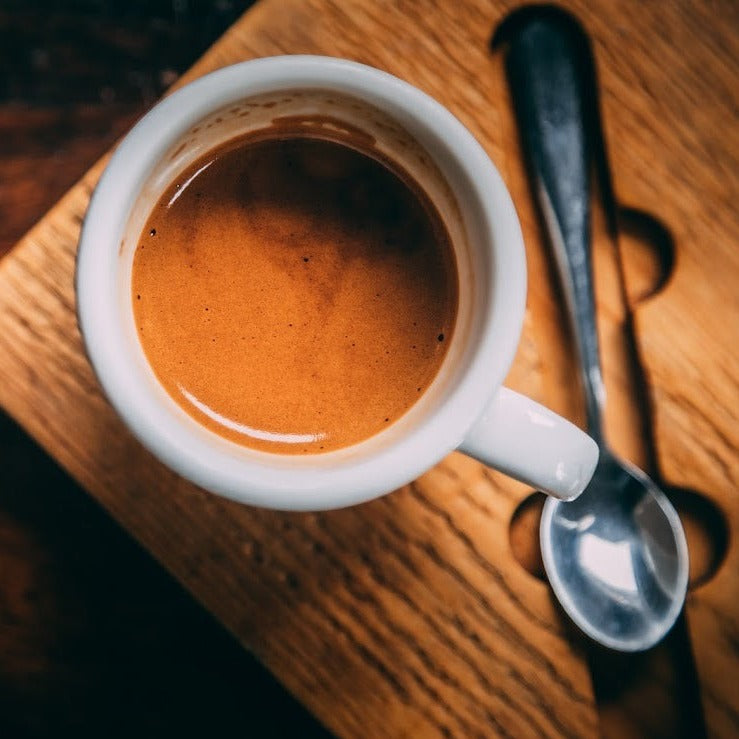A First-Time User’s Guide to Understanding SOE Single Origin Espresso
A First-Time User’s Guide to Understanding SOE Single Origin Espresso
Blog Article
Coffee Beans 101: Whatever You Need to Understand About Espresso and Blended Coffee Beans
When it comes to coffee, comprehending the nuances of coffee and mixed beans can transform your daily mug. From the growing process to roasting methods, every action plays a role in your coffee experience.
Understanding Coffee Beans: Ranges and kinds
When diving into the world of coffee, comprehending the types and ranges of coffee beans is necessary for every enthusiast. You'll largely encounter 2 primary varieties: Arabica and Robusta. Arabica beans are known for their smooth, complex flavors and lower caffeine material, making them a preferred among coffee fanatics. On the other hand, Robusta beans pack a punch with a stronger, a lot more bitter taste and higher caffeine degrees, frequently utilized in espresso blends.
Ethiopian Yirgacheffe provides bright flower notes, while Colombian beans offer a healthy taste profile. By acquainting on your own with these beans and their flavors, you'll boost your coffee experience and make more informed selections in your brewing trip.
The Growing Refine: From Seed to Bean
When you explore the journey of coffee, all of it begins with seed option techniques that establish the foundation for top quality. From there, growing and gathering play crucial functions in ensuring the beans flourish. Ultimately, processing approaches change those collected cherries right into the coffee beans you enjoy.
Seed Option Strategies
Choosing the best seeds is crucial for producing top quality coffee beans, as it lays the structure for the entire growing procedure. You must begin by picking seeds from credible sources that focus on quality and genetic variety. Search for selections understood to thrive in your certain climate and dirt conditions. Pay attention to the seed's age and storage problems, as fresh seeds tend to germinate far better. When feasible, choose for organic seeds to minimize exposure to dangerous chemicals. Think about the disease resistance of different selections, as this can significantly influence your return. Do not wait to consult with local farmers or professionals to acquire understandings right into the best seed choices for your area. This understanding will enhance your coffee-growing experience.
Farming and Harvesting
As you nurture your coffee seeds right into flourishing plants, recognizing the cultivation and harvesting process is crucial for accomplishing the best flavor and quality. Beginning by growing your seeds in well-draining soil, preferably in a shaded area to safeguard them from straight sunshine.
Hand-picking is commonly the ideal approach to guarantee just the ripest cherries are picked. Timing is essential; collecting as well early or as well late can impact the taste profile of your beans.

Processing Approaches Discussed
As soon as you've gathered your coffee cherries, the next crucial step is processing them to transform those vibrant fruits into the beans you'll brew. There are two main methods: the damp procedure and the completely dry process. In the dry process, you spread the cherries out in the sun to completely dry, enabling the fruit to ferment and impart special tastes to the beans. On the various other hand, the damp procedure entails getting rid of the fruit quickly and fermenting the beans in water, resulting in a cleaner taste. After handling, the beans are hulled, arranged, and usually dried out once again. Each technique influences the flavor profile, so try out both can aid you find your favorite mixture. Recognizing these techniques is essential to appreciating your coffee experience.
Roasting Techniques: How Flavor Is Established
When it concerns roasting coffee beans, recognizing roast levels is crucial to disclosing their special tastes. Each roasting strategy influences the scent and enhances the taste development procedure, offering you a richer coffee experience. Allow's discover just how these aspects collaborated to elevate your everyday mixture.
Roast Levels Described
Roast levels play a vital role fit the taste account of your coffee. When you select a light roast, you'll enjoy brilliant level of acidity and fruity notes. As you relocate to a tool roast, you'll see a balance of sweet taste and intricacy, usually highlighting delicious chocolate or sugar flavors. Dark roasts, on the other hand, supply vibrant, smoky characteristics with much less level of acidity, making them durable and abundant. Each level results from various roasting times and temperature levels, impacting the beans' chemical structure. By comprehending these degrees, you can much better pick a coffee that matches your taste preferences. Explore various roasts to discover which one reverberates with you, improving your total coffee experience and enjoyment.
Influence On Aroma
The roast level not only affects the preference of your coffee but also substantially influences its aroma. Each toasting technique launches various unstable compounds, shaping exactly how your coffee smells. Furthermore, the freshness of the beans plays an important role; fresh baked coffee launches a lot more aromatic oils, enhancing that tempting aroma.
Flavor Development Refine
As you check out the taste development process, you'll find that toasting strategies play a vital role fit the taste profile of your coffee. The roasting temperature level and time directly affect the level of acidity, sweet taste, and resentment of the beans. Light roasts retain even more of the bean's original flavors, highlighting fruity and floral notes. Medium roasts equilibrium acidity and body, using an all-round taste. Dark roasts, on the other hand, draw out strong, smoky features while lessening the bean's intrinsic top qualities. Throughout roasting, chemical responses, like the Maillard reaction and caramelization, change the beans and boost their complexity. Try out different roasting levels can aid you locate your excellent brew, so do not think twice to taste and uncover the rich range of tastes!
Coffee vs. Blended Coffee: Trick Differences
Espresso and mixed coffee each offer distinct experiences that accommodate various preferences and choices. Coffee is a focused coffee made by forcing warm water with finely-ground coffee beans, causing a rich, strong flavor and a velvety layer of crema ahead. It's typically enjoyed as a shot or used as a base for drinks like cappuccinos and lattes.
On the other hand, mixed coffee integrates different beans from different regions, producing a much more well balanced flavor profile. You'll usually locate blends that highlight body, level of acidity, or sweetness, making them flexible for different brewing methods. While espresso concentrates on strength, combined coffee may provide a broader variety of tastes that can transform with each sip.
Eventually, your choice between espresso and blended coffee boils down to your personal choice. Whether you long for a quick jolt or a leisurely cup, both alternatives have something scrumptious to offer.

Brewing Approaches: Unlocking the Perfect Mug
When it comes to developing coffee, discovering the right approach can transform your experience and raise your cup. Each developing technique has its unique appeal and can greatly impact your coffee's taste and fragrance. For example, utilizing a French press enables you to delight in a robust and rich mixture, while a pour-over method provides a clean, bright cup with distinctive flavors.
If you choose coffee, purchasing a quality device can assist you understand the art of drawing shots. Conversely, for comfort, a single-serve shuck system supplies rate without giving up preference.
Don't fail to remember regarding chilly brew, which supplies a smooth, much less acidic coffee suitable for hot days. Experiment with various techniques to find what resonates with your palate.
Tasting Notes: Identifying Flavor Profiles
Exactly how can you really appreciate your coffee if you do not know what tastes to look for? Tasting notes are your guide to comprehending the intricate world of coffee. Some coffees could leave a chocolatey or sugar aftertaste, while important site others might have a bright, clean coating.
Take into consideration the body of the coffee, as well; is it airy and light or thick and syrupy? Don't neglect acidity; a brilliant acidity can include vigor, while a reduced acidity may give a smoother experience. By recognizing these flavor accounts, you'll deepen your connection with each mug, making coffee sampling a wonderful trip of discovery.

Tips for Picking and Storing Coffee Beans
Selecting and saving coffee beans correctly can considerably boost your brewing experience. Begin by selecting high-grade beans that suit your taste - SOE.
When you have your beans, keep them in an impermeable container to stop direct exposure to light, air, and wetness. A dark, trendy area functions best, so avoid maintaining them in the refrigerator or fridge freezer, as this can present moisture. Just my website grind the quantity you need to preserve freshness; whole beans preserve taste longer than pre-ground coffee.
Last but not least, attempt to utilize your beans within 2 to 4 weeks after opening up for peak taste. Complying with these pointers will certainly ensure your coffee stays tasty and satisfying, raising your everyday mixture to new heights.
Frequently Asked Concerns
The Length Of Time Do Coffee Beans Stay Fresh After Roasting?
Coffee beans stay fresh for regarding two weeks after roasting - SOE. You must keep them in an airtight container, away from light and wetness. Afterwards, their flavor and scent begin to decrease substantially

Can I Mix Different Coffee Bean Varieties?
Absolutely, you can mix different coffee bean selections! Exploring with blends can improve flavors and create an unique preference account. Just make certain to stabilize the strengths and characteristics of each variety for the very best outcomes.
What Is the Perfect Work Dimension for Coffee?
For coffee, you'll want a great grind dimension, regarding the texture of common salt. This permits excellent extraction, leading to a rich, delicious shot. Experiment a little bit to discover what suits your preference best!
Exactly How Does Elevation Affect Coffee Bean Taste?
Elevation affects coffee bean flavor by affecting the development rate and chemical make-up. Greater elevations bring about slower growth, which boosts level of acidity and complexity, offering your coffee a distinct and vibrant preference you will not neglect.
Are There Decaffeinated Versions of Espresso Beans?
Yes, there are decaffeinated versions of espresso beans. You can appreciate a rich espresso taste without the caffeine kick. Just try to find "decaf" blends at your neighborhood coffee bar or specialty store.
Coffee Beans 101: Whatever You Required to Know Concerning Coffee and Blended Coffee Beans.
When diving into the world Get More Info of coffee, recognizing the kinds and varieties of coffee beans is necessary for every lover.When it comes to toasting coffee beans, understanding roast levels is essential to disclosing their special tastes. Espresso is a concentrated coffee brewed by compeling warm water via finely-ground coffee beans, resulting in an abundant, strong taste and a creamy layer of crema on top.On the various other hand, mixed coffee combines different beans from different regions, creating a much more balanced taste account.
Report this page